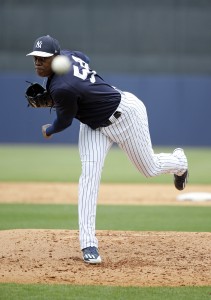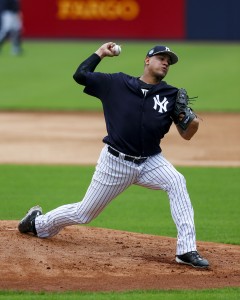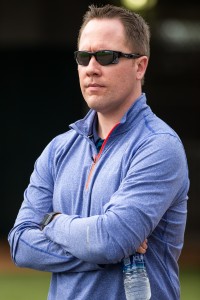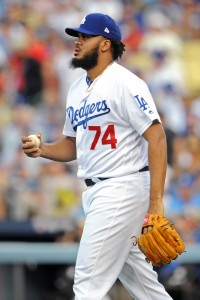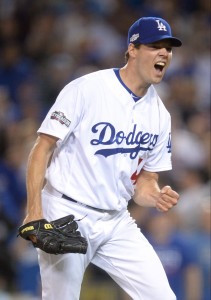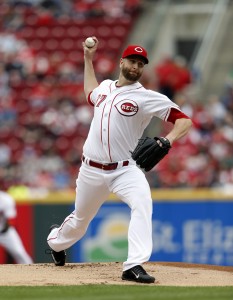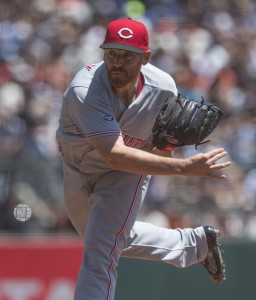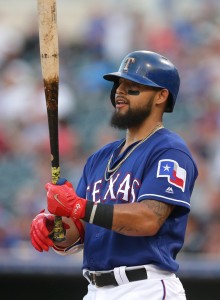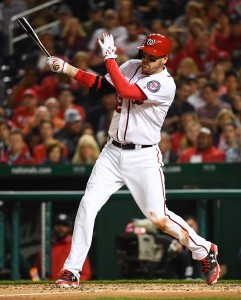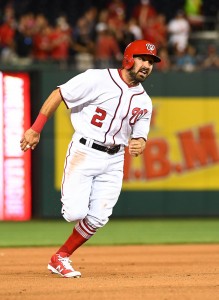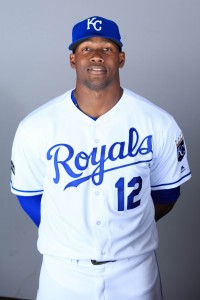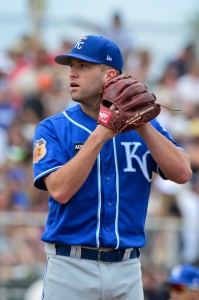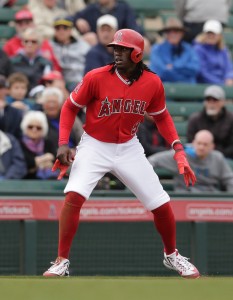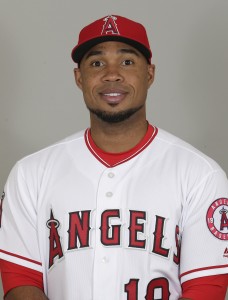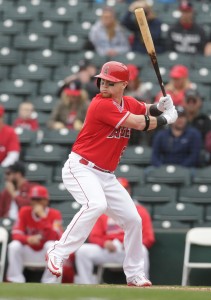This is the latest entry in MLBTR’s Offseason In Review series. The full index of Offseason In Review posts can be found here.
The Tigers appeared headed for a significant sell-off following GM Al Avila’s ominous comments about paring back payroll and staying within the team’s means, but the Tigers instead had a fairly quiet offseason.
Major League Signings
- Alex Avila, C: One year, $2MM
Notable Minor League Signings
- Omar Infante, Edward Mujica, Alex Presley, Bryan Holaday, David Lough, A.J. Achter, Collin Balester, Travis Blackley, Brendan Ryan, Efren Navarro
Trades and Claims
- Traded OF Cameron Maybin to the Angels in exchange for minor league RHP Victor Alcantara
- Acquired OF Mikie Mahtook from the Rays in exchange for a PTBNL (RHP Drew Smith)
- Selected LHP Daniel Stumpf from the Royals in Rule 5 Draft
Extensions
- None
Notable Losses
- Maybin, Jarrod Saltalamacchia, Erick Aybar, Mike Pelfrey, Mark Lowe
Needs Addressed
“We want to run the organization without having to go over our means. We want to stay competitive, but at the same time, this organization has been working way above its means for some time.”
Those were the words spoken by Tigers GM Al Avila on Oct. 18, and they understandably led to a perception that the Tigers, long a powerhouse in the American League Central, were set to begin shopping several members of their aging core throughout the offseason. The trade of Cameron Maybin on the very first day of the offseason, which shed $9MM and added a power arm to the Detroit farm system, did little to dispel that notion. Detroit appeared to be embarking on a sale.
Over the next several months, names such as J.D. Martinez, Francisco Rodriguez, Justin Wilson, Jose Iglesias and Ian Kinsler were bandied about the rumor mill. Even cornerstones Miguel Cabrera and Justin Verlander, each of whom has full veto power over potential trades, found themselves as the subject of rumors. The Astros were linked to Cabrera at one point, while the Dodgers were tossed out as a potential destination for Verlander (and for Kinsler as well). Somewhat surprisingly, however, the Maybin trade proved to be Detroit’s only notable subtraction of the offseason.
Later in the offseason, Avila stressed that there was never any mandate from ownership that he shed payroll. That seemingly held true even as the torch was passed from long-time owner Mike Ilitch to his son, Christopher, after the former’s death in February at 87 years of age. While there may be some differences moving forward — the elder Ilitch had often dipped into his pockets to acquire and keep top stars — there also wasn’t to be a sudden change of direction. Rather, as Avila explained, the Tigers were only looking to make good baseball trades.
Despite the prior comments and despite the fact that many of the team’s best players are entering their mid-30s, the Tigers understandably still felt there was an opportunity to compete in the AL Central after finishing the 2016 season with 86 wins. After all, with better health from Jordan Zimmermann, a full season of Rookie of the Year Michael Fulmer and improved performance from Justin Upton (who had a monster second half), it’s hardly unreasonable to expect a better record.
Detroit, though, was also conscious of adding to its payroll. Ever cognizant of the long-term commitments that are piling up for aging stars — Detroit already has $83MM guaranteed to Cabrera, Verlander and Zimmermann as far down the line as 2019 — the Tigers eschewed any long-term commitments. A reunion with Alex Avila, who is serving as the backup to young James McCann, proved to be the only Major League free-agent signing. Similarly, Detroit opted not to add any proven players on the trade market, instead rolling the dice on a minor deal to pick up former first-round pick Mikie Mahtook from the Rays.
All of that, though, is not to say that there aren’t players the Tigers would like to have moved. Detroit did its best to shop Mike Pelfrey, Mark Lowe and Anibal Sanchez throughout the offseason. Each veteran carried a significant salary in the final year of his contract, with Pelfrey set to earn $8MM, Lowe earning $5.5MM and Sanchez owed a staggering $21MM (including the buyout of his 2018 option). Unsurprisingly, Avila and his staff found no takers for that trio of underperforming right-handers. Rather than block younger arms with three overpaid vets, the Tigers bit the bullet and absorbed the salary of Pelfrey and Lowe by releasing them in Spring Training.
Questions Remaining
The primary question remaining for the Tigers, now, is if they’ll instead look to sell at the non-waiver trade deadline this year. That decision will be driven by the performance of the club, and the team is off to a solid start thus far with an 11-10 record. Due to the aforementioned veto power over trades, it never seemed likely that Detroit would part with either Verlander or Cabrera. However, the prospect of trading players such as J.D. Martinez, Kinsler, Rodriguez and Justin Wilson was very real and will be once again this summer if the team is under .500.
In fact, even if the Tigers are on the periphery of the Wild Card picture, it’s still possible that they’ll move some pieces. In recent years, teams have been increasingly willing to move impending free agents at the deadline if they may not be worthy of a qualifying offer (e.g. Mark Melancon being traded to the Nationals in 2016). While J.D. Martinez certainly seems likely to merit a qualifying offer if he is able to return to form once activated from a foot injury, Rodriguez definitively will not be. If K-Rod is throwing well, the Tigers could look to move him regardless of their position in the standings, assuming they’re able to fetch a reasonable young piece in return. I’d imagine that the same is true of Justin Wilson, despite the fact that he’s controllable through 2018. While Wilson is arguably the best reliever in the Detroit ’pen, hanging onto him in pursuit of a one-game playoff rather than capitalizing on a potentially significant deadline return doesn’t seem prudent.
Looking at the larger picture, the Tigers face significant long-term questions in the outfield. The team is hopeful that JaCoby Jones can fill a long-term role in the outfield, but Jones is new to the outfield and has a .544 OPS through the first few weeks of the season. The acquisition of Mikie Mahtook was intended to give the club another option there, but he’s not hitting any better. Anthony Gose was once viewed as the center fielder of the future in Detroit, but he’s been outrighted off the 40-man roster and is now once again pitching in the minors.
The situation is no better in the corners. Steven Moya, whom the club once hoped would be its long-term right fielder, was also outrighted this winter. J.D. Martinez is a free agent following the season, and it’s also possible that Upton, who is hitting .265/.344/.560 with 27 homers over his past 381 plate appearances dating back to July 1, will opt out at season’s end. While that may actually be a good thing for Detroit’s long-term payroll ledger, it would also further cast doubt as to who will be patrolling the outfield at Comerica Park in 2018 and beyond. At present, Tyler Collins is the only controllable outfielder producing in 2017, though his track record is limited.
There are fair concerns, too, about the pitching. Daniel Norris and Matt Boyd are getting chances to join Michael Fulmer as 2015 deadline acquisitions-turned-rotation stalwarts. But neither has approached Fulmer in accomplishment to this point. Meanwhile, the high-priced Jordan Zimmermann is hoping to prove that his 2016 was an aberration and join Verlander to form a quality 1-2 veteran punch. But the results have not been promising early.
The bullpen (other than Justin and Alex Wilson) has perhaps been even more concerning than expected to this point. Rodriguez was shaky, though largely still effective, in 2016, but he has been quite hittable thus far. And the club could well continue to struggle to find good innings from other setup options — including Shane Green, who hasallowed seven waks against seven strikeouts in his first seven innings. While fireballers Bruce Rondon and Joe Jimenez have at times seemed like closers of the future, neither has succeeded early their careers (though there’s plenty of time to turn it around, at least in the case of Jimenez).
Deal of Note
The trade of Maybin on Nov. 3 looked to be the first of many notable moves for the Tigers this winter, but they instead largely stood pat from that point forth. While Avila’s comments that there was no mandate to pare down the payroll are no doubt true, it certainly seems as though there was also plenty of trepidation about adding to the payroll. When the club was searching for center fielders prior to acquiring Mahtook, Anthony Fenech of the Detroit Free Press reported that the Tigers were only looking to spend about $2MM. The center field addition they did make (Mahtook) was earning considerably less, as he’s not yet eligible for arbitration.
Dealing Maybin did bring the club a reasonably useful prospect — MLB.com ranks Alcantara 25th among Tigers farmhands — but looking back on the offseason as a whole, the Tigers aren’t any better overall for the deal. Detroit’s Opening Day payroll is roughly identical to last year’s mark, and the team returned effectively the same core but with a weaker outfield mix. I’ll fully admit that this observation is made with the benefit of hindsight, and it has to be noted that the Tigers couldn’t have known in early November that they wouldn’t get the offers they sought for seemingly marketable assets like Kinsler, Martinez and Wilson.
However, the Tigers had to be cognizant of the fact that their asking prices were a long shot to be met by mid-December, and yet the team still elected not to make even marginal investments to enhance the 2017 roster. Ben Revere (Dec. 23) and Colby Rasmus (Jan. 30) both signed late in the offseason for $5MM guaranteed or less, for instance, and either would’ve served as a likely upgrade to the internal center field options the Tigers took to Spring Training (even with Rasmus recovering from offseason surgery).
Overall, the loss of Maybin isn’t likely to make or break the team’s playoff hopes in 2017, but weakening the team on the first day of the offseason and then doing little to further stock the farm system, shed payroll or bolster the 2017 roster seems counterproductive.
Overview
The expectations of a fire sale proved to be misplaced, but the Tigers’ lack of virtually any winter activity in either direction is still a bit puzzling. It was commonplace to suggest that the Tigers entered the offseason at a crossroads, but rather than deciding which way to turn, the team effectively stood still — with nearly $200MM in MLB salary still on the Opening Day books.
Now, the Tigers find themselves a somewhat uncomfortable position. Detroit unquestionably has the talent to win in 2017, but there are larger questions looming beyond the current campaign. Though there’s a desire to trim payroll, the majority of the club’s most expensive assets are close to immovable either due to no-trade clauses, opt-out provisions or underperformance. However, the team may also be reluctant to look to replenish a thin farm system by moving its more appealing assets in the midst of a season that could yield a playoff berth.
Avila and his staff will have to walk that fine line this summer as they seek to balance current postseason odds with the chances of beginning to rebuild a sustainable core that can once again help them to reach October baseball on a near-annual basis. It’d be an easier call if the Tigers were either running away with the division or sitting near the cellar, but given the strength of the Indians and the relative weakness of the Royals, Twins and White Sox, that seems unlikely. More probable is the fact that the Tigers will be jostling for position with the Indians and firmly in the Wild Card mix, which will force the front office into some difficult decisions.
Let’s see how MLBTR readers grade Detroit’s offseason (link to poll for Trade Rumors app users)…

